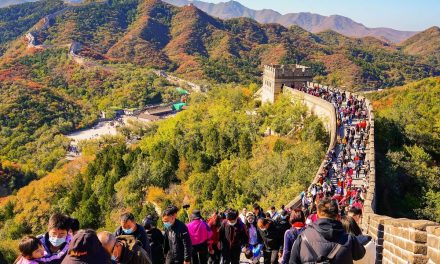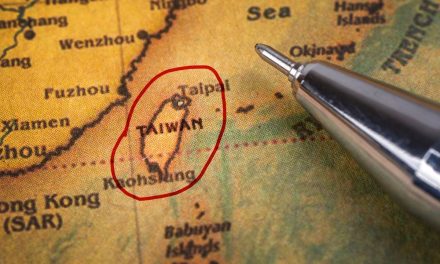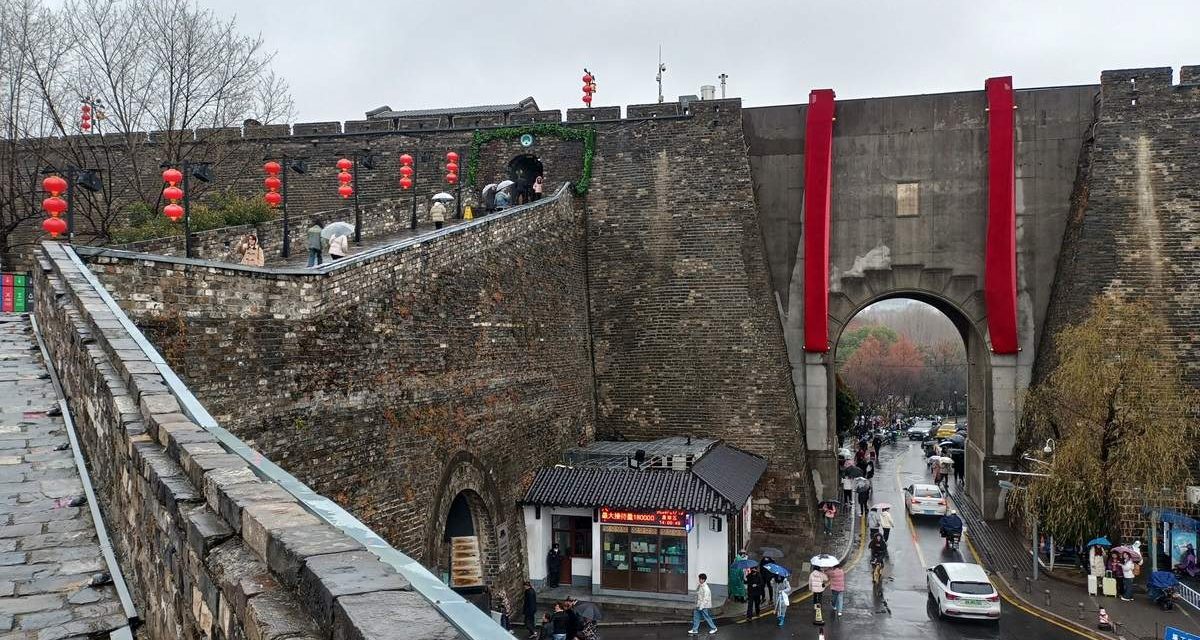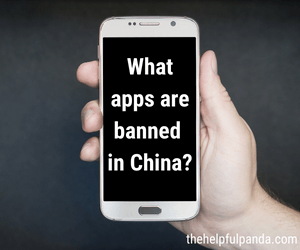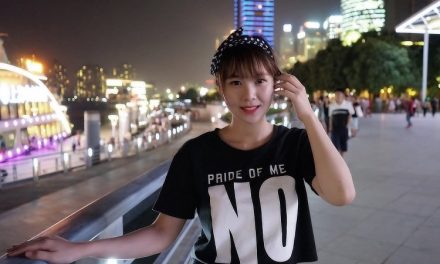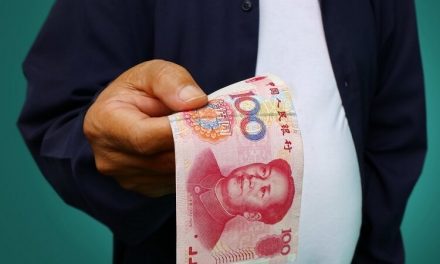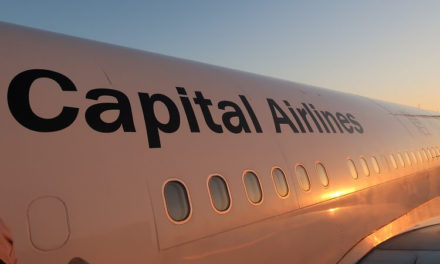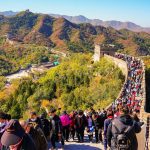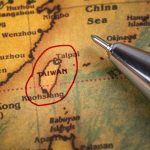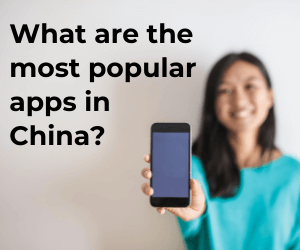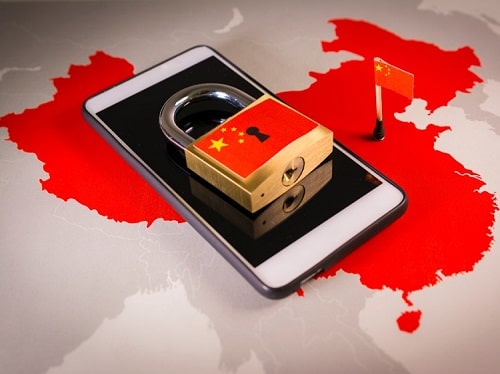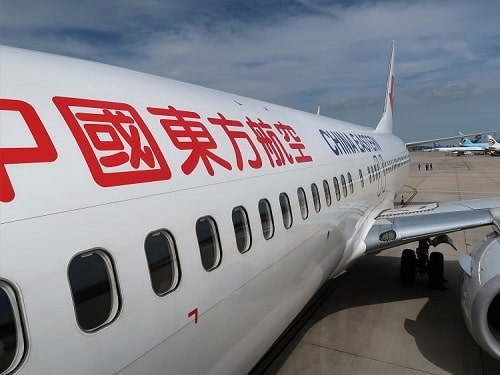There are plenty of things to do in Nanjing, China’s ancient southern capital.
If you’re into museums, historical sites, and free attractions, then you’ll love Nanjing.
I’d say the city is up there with Beijing when it comes to Chinese culture and an appreciation of the past.
Even though I spent a week in Nanjing, if you’re smart with your time you could squeeze the best bits into a few days by using the amazingly efficient underground metro.
Alright, here are the top things to do in Nanjing!
1. Climb up to the Sun Yat-sen Mausoleum
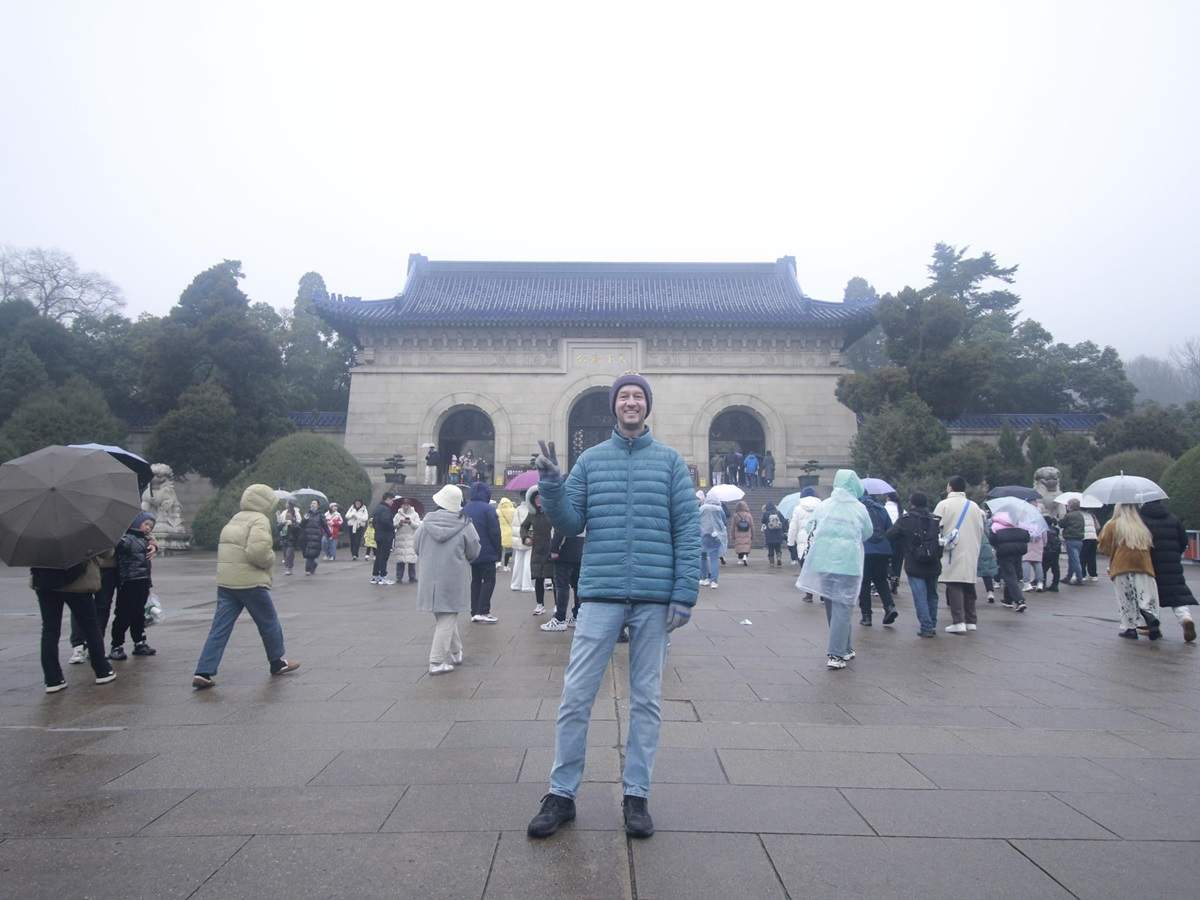
Me at the first gate of the mausoleum. Image supplied by Mike Cairnduff.
This is the most popular thing to do in Nanjing. And it’s always busy because it’s free.
So what is the Sun Yat-sen Mausoleum?
I’d say it’s a monument, or a shrine even, to the highly respected father of the Republic of China.
Dr Sun Yat-sen was also the first leader of the Kuomintang Party, so I find it quite odd that the locals adore him, given this is the party that was toppled by the current Chinese Communist Party regime.
Maybe I need to do some more reading on this!
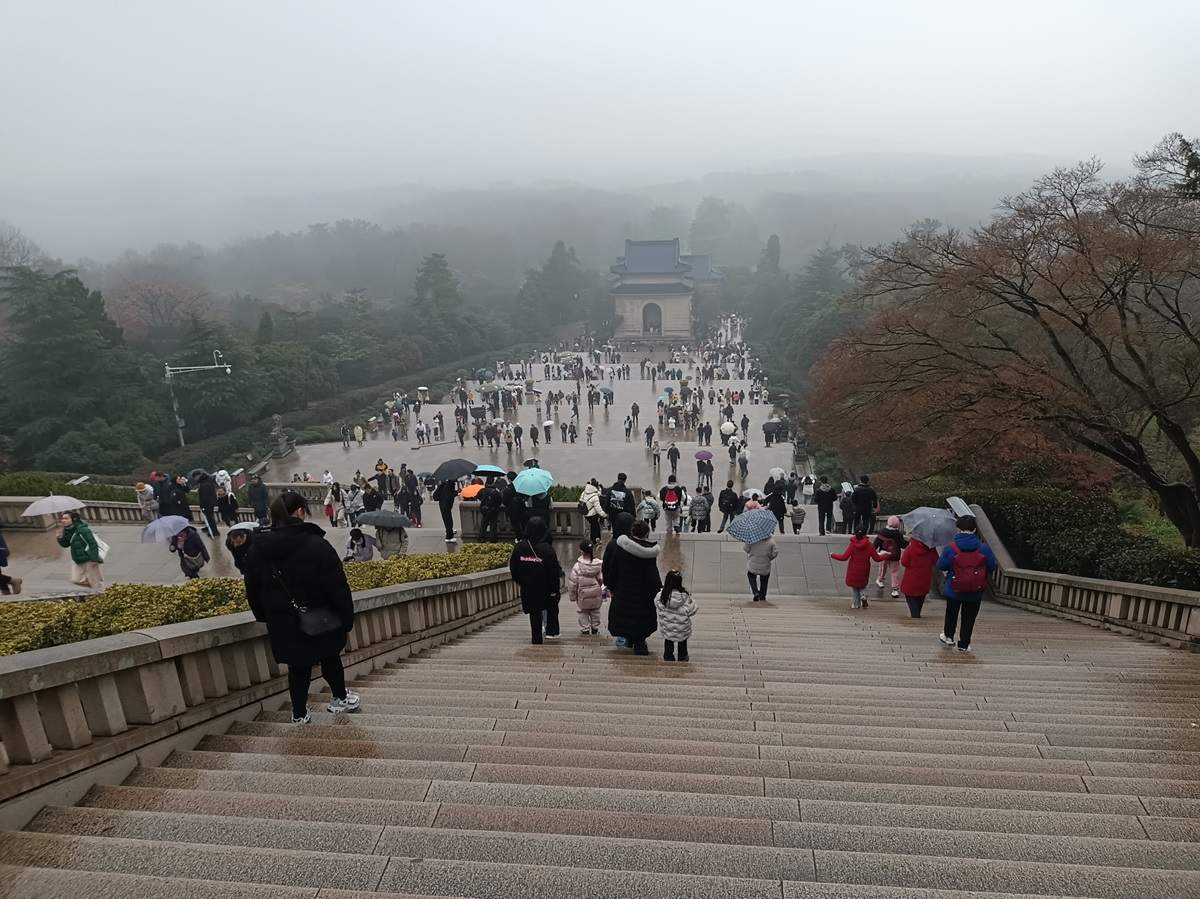
Looking down from the mausoleum. Image supplied by Mike Cairnduff.
There is no human body or any ancient cultural relics to see – you simply walk up hundreds of stairs to where the shrine is. You can then line up to enter the shrine where there’s a statue of Sun Yat-sen.
You can’t take photos of the statue, and it’s guarded by security. Yep, the OG leader is that revered.
The view from the top of the stairs towards the archways and over the Purple Mountain is really nice, and the whole area has a very serene feeling to it (despite your typical noisy Chinese people).
Like many Chinese attractions these days, it’s a pain to get in unless you have WeChat and you can read Mandarin.
All visitors must pre-register an arrival time on the mausoleum’s WeChat Mini Program.
I suggest getting your hotel to help register you. You’ll need your passport number.
My top tips for the Sun Yat-sen Mausoleum:
- Register for entry on WeChat at least the day before
- Brace yourself for the hundreds of steps if you’re old or unfit
- Avoid going on the weekend
Metro station: Muxuyuan on Line 2.
2. Visit the Ming Xiao Tombs
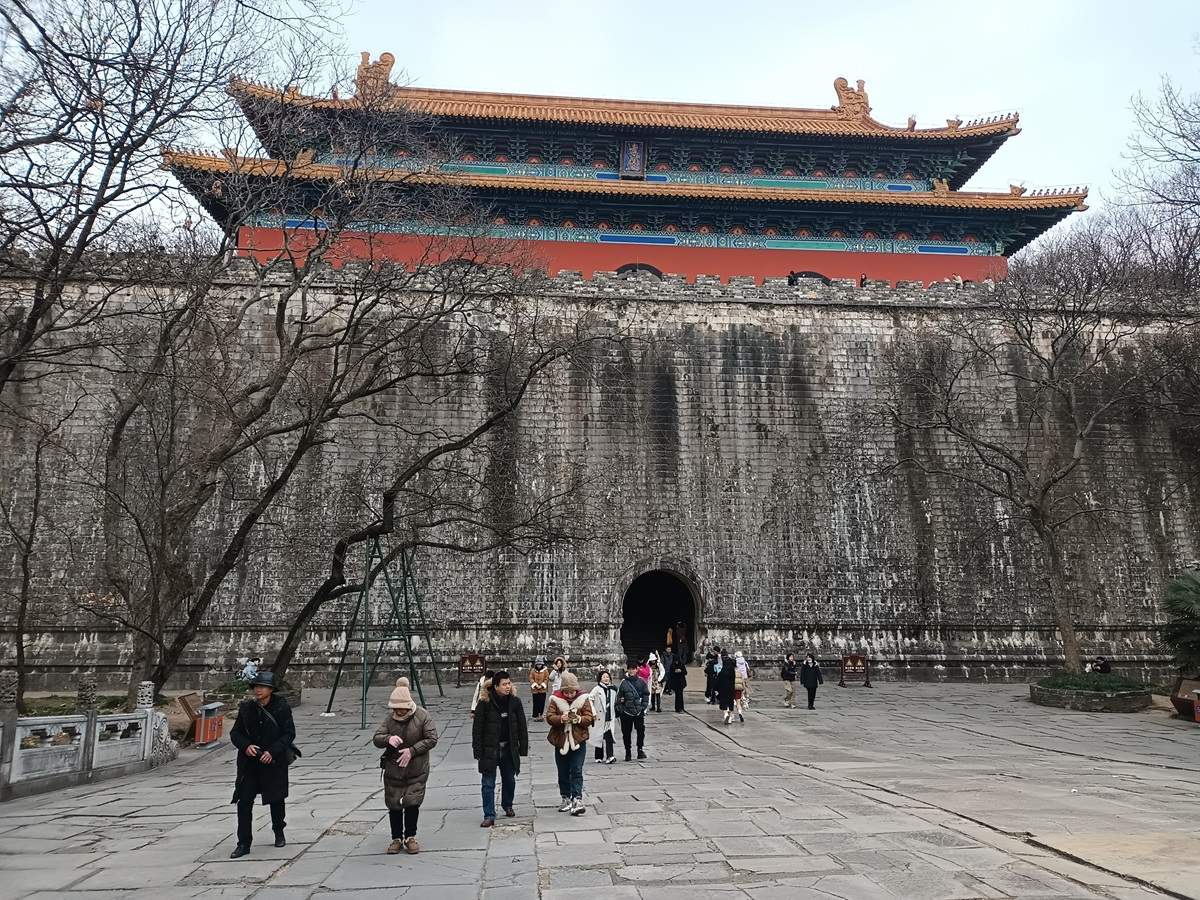
You can walk through the building and up onto the balcony. Image supplied by Mike Cairnduff.
While we’re still at Purple Mountain (also known as Zhongshan Mountain National Park), the next stop is the Ming Xiao Tombs.
This is the final resting place of the Hongwu Emperor, the founder of the Ming Dynasty named Zhu Yuanzhang. It’s now a UNESCO World Heritage Site.
Like the Sun Yat-sen Mausoleum, there’s no tomb to see here, rather a grand old stone structure. A local person told me the actual body is somewhere close by, but no one knows exactly.
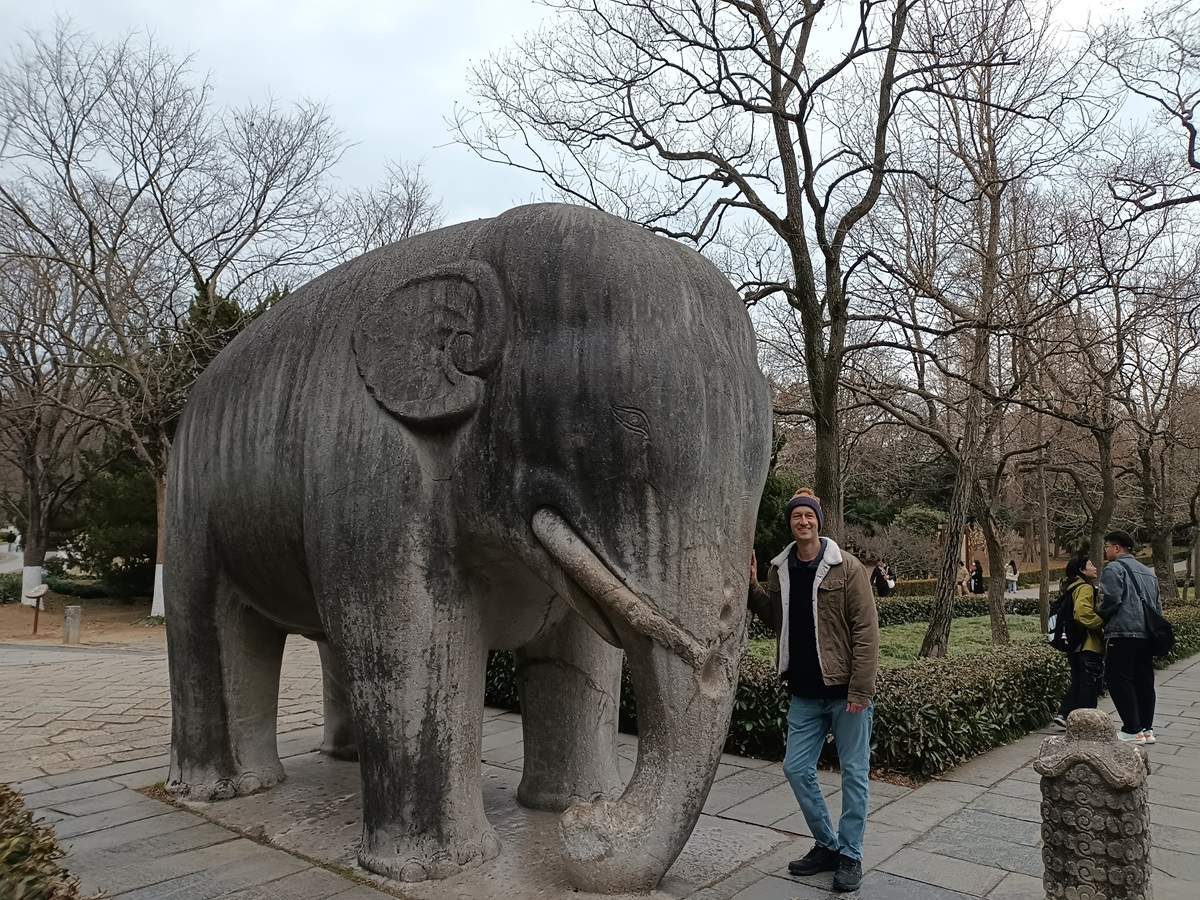
I’m not sure if touching it gives you good luck! Image supplied by Mike Cairnduff.
Before you reach the tomb building, you walk past some lovely stone statues of revered creatures in Chinese mythology, such as turtles and elephants.
Depending on the season you’re there, you might see cherry blossoms throughout the park. I was a bit early, and the buds were just starting to grow.
I saw the Sun Yat-sen Mausoleum and Ming Tombs (or Ming Xiaoling Mausoleum) on different days so I didn’t have to rush through everything.
But they’re only a mini-bus ride away from each other, so you could easily see them on the same day.
You could also walk, but just keep in the mind that the park is huge.
The entrance fee is 70 yuan (about US$10) so there’s much less pandemonium here than at the free Sun Yat-sen Mausoleum.
Metro station: Xiamafang on Line 2.
3. Walk along the Nanjing City Wall
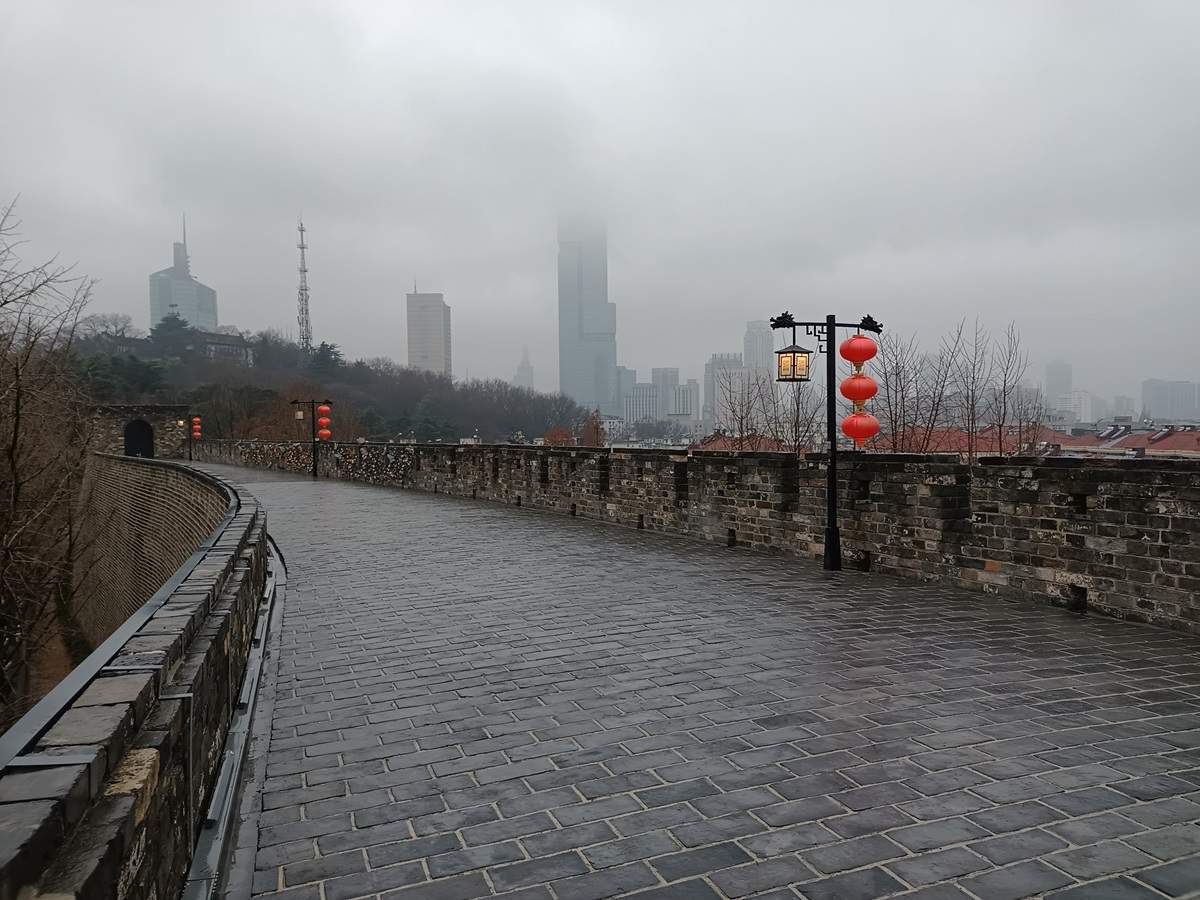
The popular Xuanwu section of the Nanjing City Wall. Image supplied by Mike Cairnduff.
I really love the history of city walls, and imagining what it would have been like to protect a city from invaders.
The original Nanjing City Wall was the longest city wall ever built. Nowadays, only parts remain.
So, it’s very different to say the Xi’an City Wall, which is much shorter but still intact from start to finish.
For the parts that remain, Nanjing’s wall is in great condition. And its claim to fame is that it still is the country’s longest city wall.
The two main parts I recommend you walk along are:
- Zhonghua Gate (entry 50 yuan)
- Xuanwu Gate (entry 20 yuan)
I preferred Zhonghua because the wall is longer so you can spend more time walking along it.
Generally speaking, the Chinese don’t like to walk long distances, so once you get past the entrance, you’ll have the wall all to yourself.
Zhonghua is also nice because it’s within walking distance to the Confucius Temple area, which I talk about further down.
And, you can get a good glimpse of the Porcelain Tower of Nanjing as you traverse the wall.
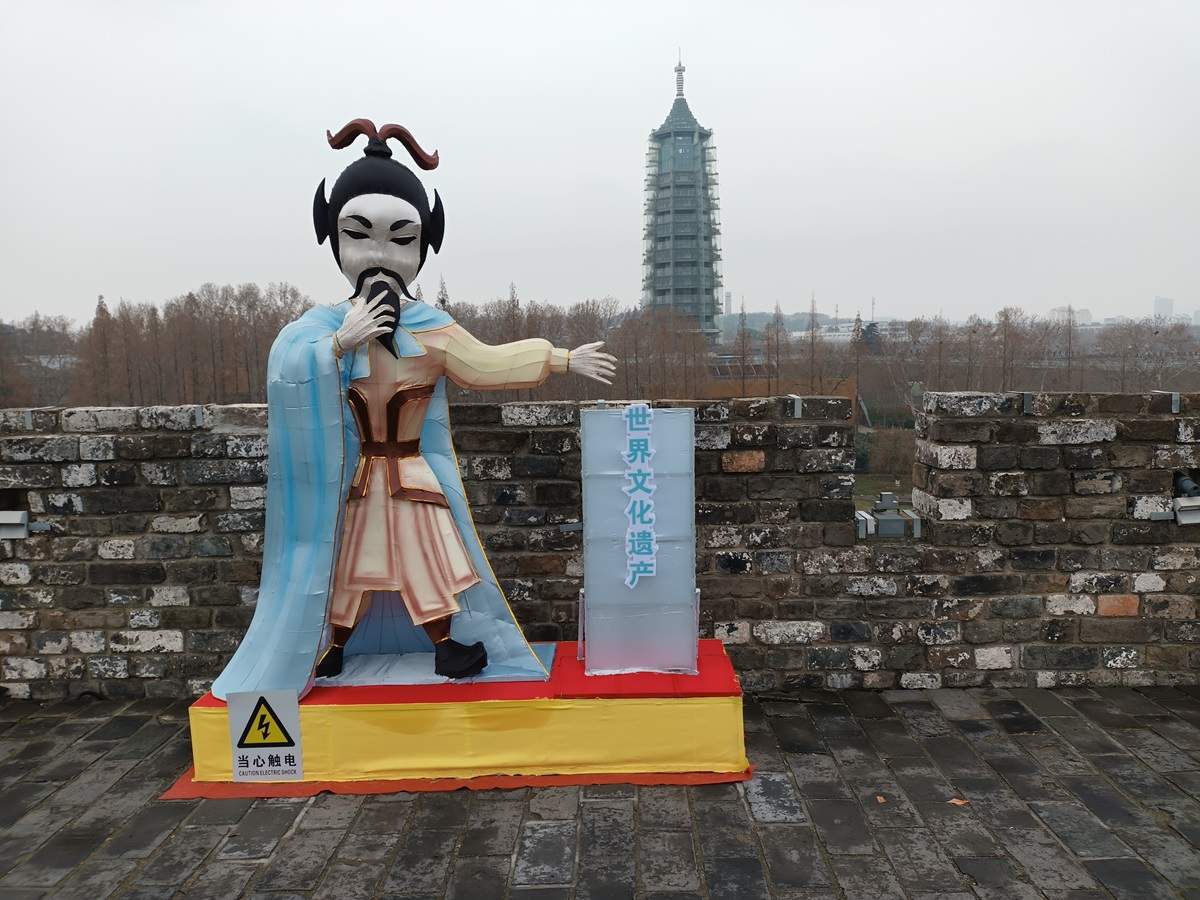
Zhonghua section of the city wall with the Porcelain Tower in the background. Image supplied by Mike Cairnduff.
Xuanwu is the more popular section of the Nanjing City Wall, however, because it’s right by Xuanwu Lake so the views are better and you can kill the two birds with the one stone.
But even if you don’t venture into the lake area, you can still admire the lake while walking along the wall.
Xuanwu also has a great photo op with the ancient wall in the foreground and the glitzy Zifeng Tower in the background.
As you can see by my photo though, if it’s a smoggy winter’s day that amazing photo op just isn’t there!
The old city walls are easy to get to via the underground metro. Zhonghua Gate station is called Zhonghuamen, and Xuanwu Gate station is called Xuanwumen.
Metro stations: Both Zhonghuamen and Xuanwumen are on Line 1.
4. Go boating on Xuanwu Lake
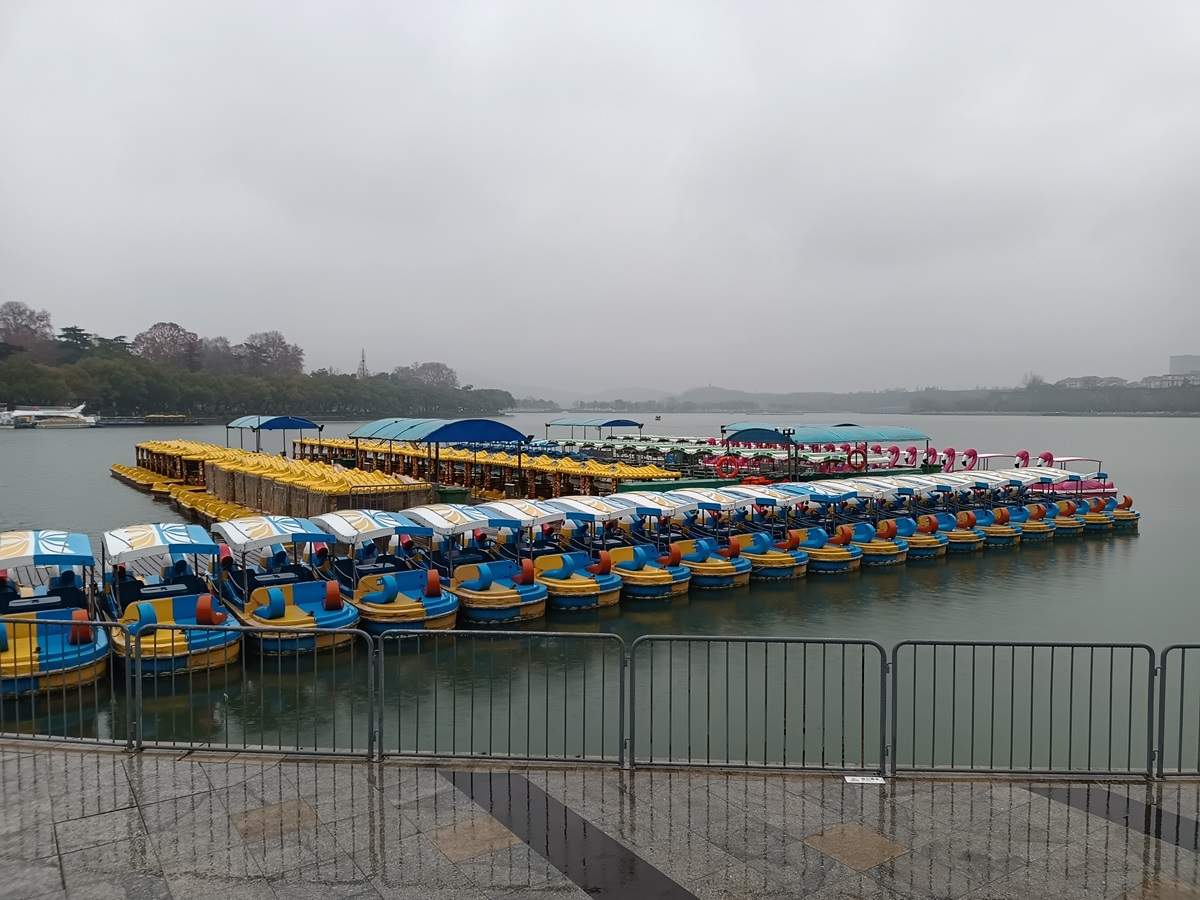
Go boating if the weather permits! Image supplied by Mike Cairnduff.
Once you’ve finished walking along Xuanwu Gate, go and explore Xuanwu Lake Park.
It’s the biggest open, green space in the city and there’s plenty of leisure-y things to do there.
On a nice day, you can take a boat out or simply sit on a park bench and people-watch.
Entrance to the lake is free.
Metro station: Xuanwumen on Line 1.
5. Pay your respects at the Nanjing Massacre Museum
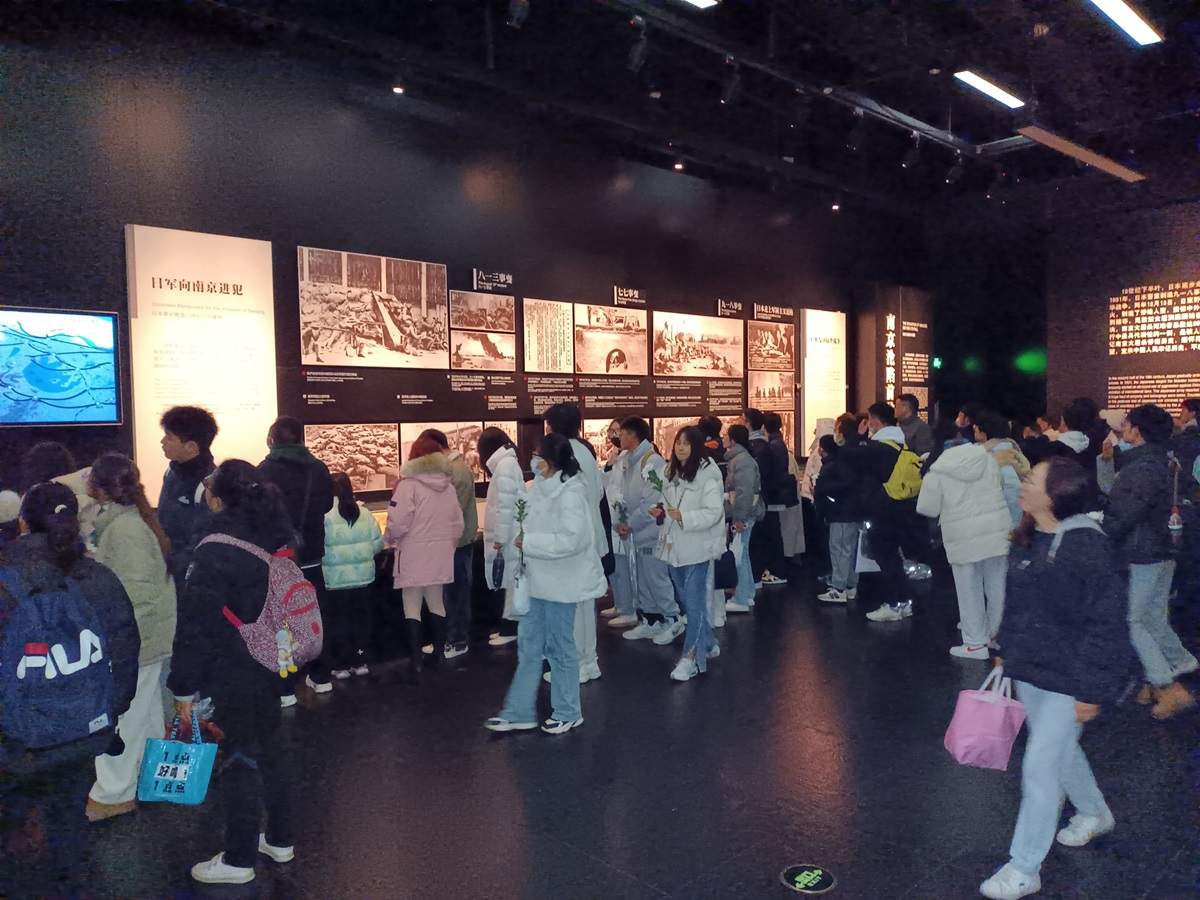
It gets busy at the Nanjing Massacre Museum. Image supplied by Mike Cairnduff.
This is one of the biggest draws in Nanjing. And it’s free to get in.
If you’re unfamiliar with Chinese history, I’ll summarize the Nanjing Massacre in two short paragraphs for you.
Basically, right before World War II started when the Japanese bombed Pearl Harbor, Japan’s invasion of northern and eastern China had reached Nanjing.
The Japanese Army killed an estimated 300,000 local people, but why the event is so disturbing is that the Japanese invaders also brutally murdered, raped and robbed innocent civilians including children. It’s for this reason that the Chinese despise the Japanese to this day.
The museum is more an exhibition hall with written accounts and stories of survivors who were brave enough to tell their story.
It’s definitely worth making the visit and reflecting on how grotesque the invasion was.
Honestly, the Nanjing Massacre Museum is probably one of the few Chinese “tourist attractions” (if you can call it that) which is extremely quiet. I wasn’t expecting that, given how loud Chinese people usually are.
Like Dr. Sun Yat-sen’s mausoleum, you need to pre-register on WeChat to get into this museum. And it’s all in Chinese, so get your hotel to help you.
Silly me waited until I got to the museum to scan the QR code out the front, only then to discover that all sessions were booked for the rest of that day.
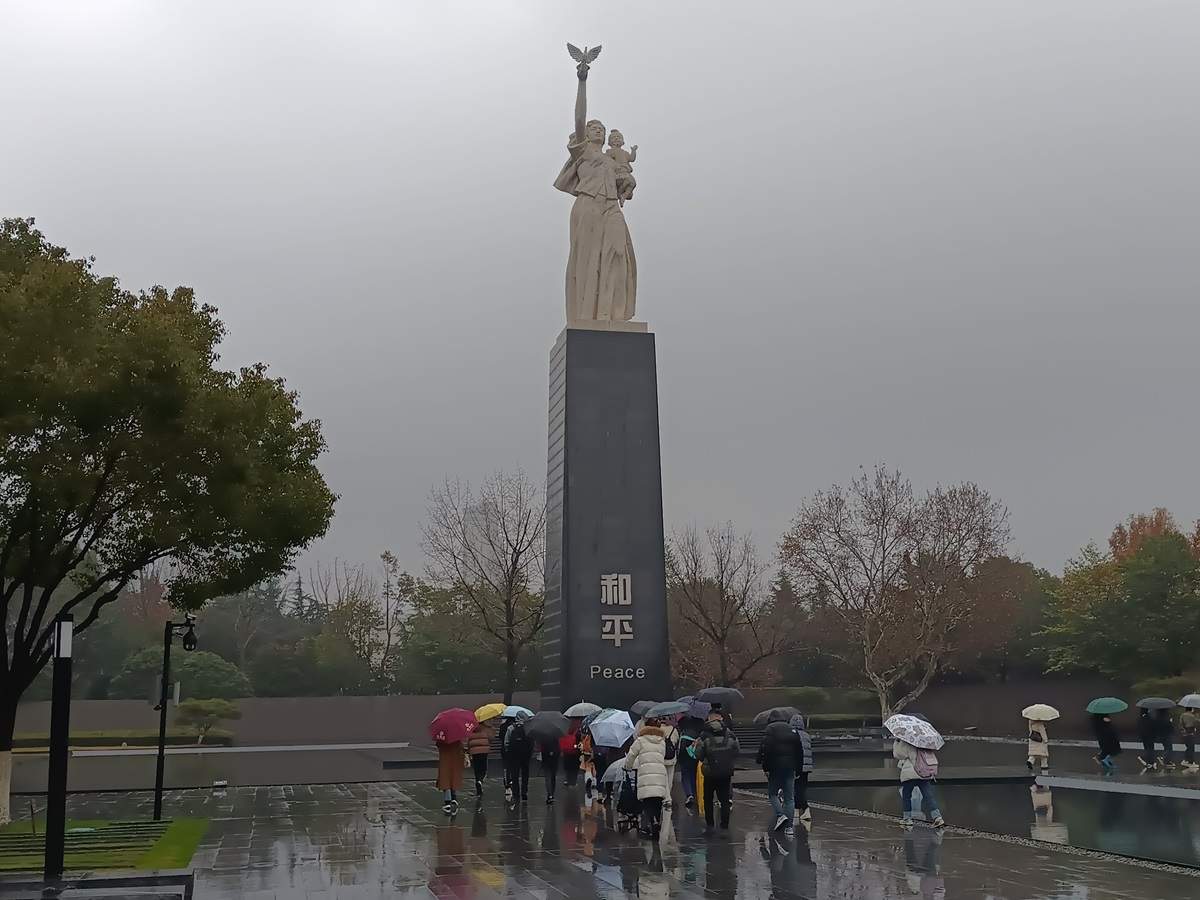
The whole place is quiet and eerie but definitely worth visiting. Image supplied by Mike Cairnduff.
My top tips for the Nanjing Massacre Museum:
- Register for entry on WeChat at least two days before
- Bring your passport
- Don’t bring young kids as it’s unsuitable for them
- Avoid going on the weekend (but it’s always busy)
If you’re a history buff, you could also do some pre-reading on the Rape of Nanjing. I actually read the book a long time ago.
Metro station: Yunjinlu on Line 2. When you get off, follow the crowd or look for the ‘Memorial Hall of the Victims in Nanjing Massacre by Japanese Invaders’ exit sign.
6. Visit one of the many (other) museums
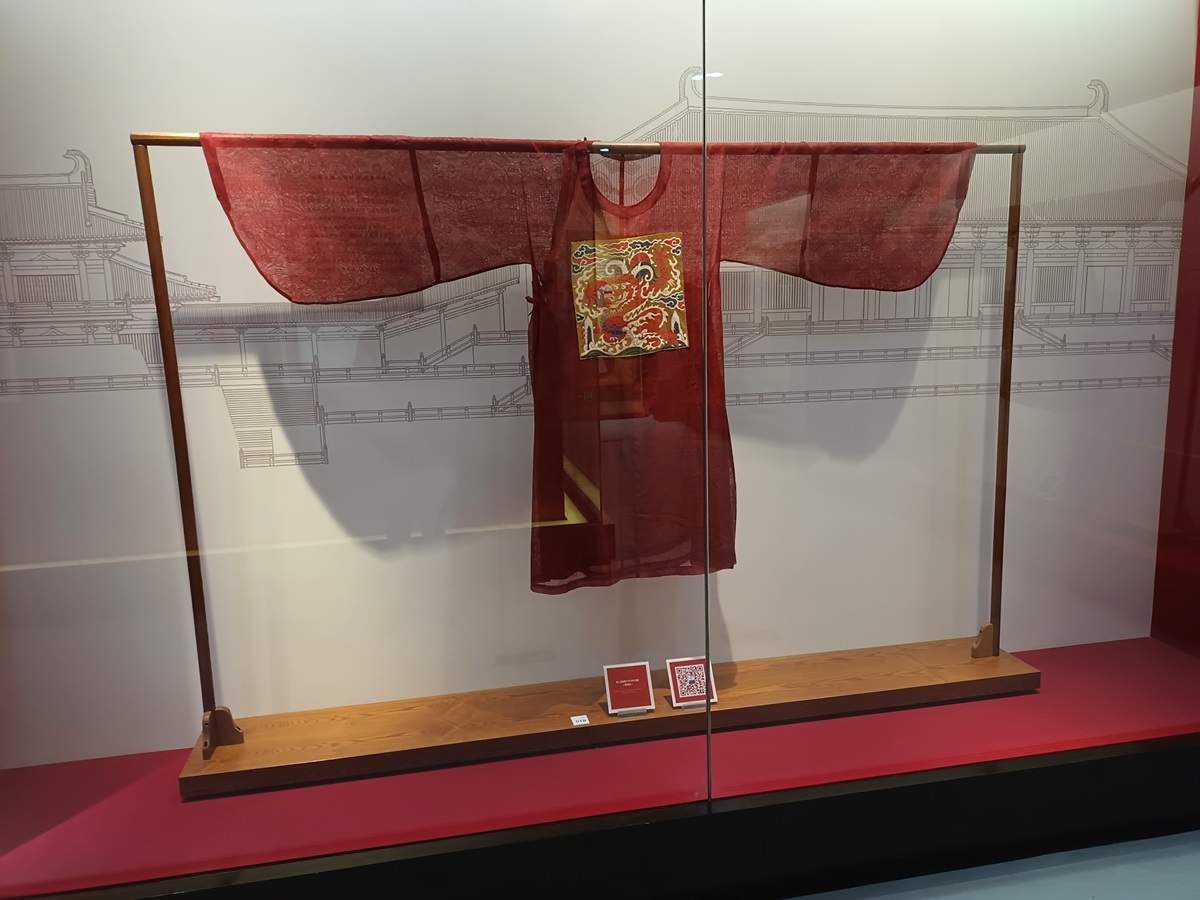
See ancient emperor’s clothing at the Nanjing Yunjin Cloud Brocade Museum. Image supplied by Mike Cairnduff.
During my travels (and working life) in China, I have seen sooo many museums that I just couldn’t bring myself to seeing Nanjing’s best – the aptly named Nanjing Museum.
But I did manage to see the Nanjing Yunjin Cloud Brocade Museum though, because it’s right by the Nanjing Massacre Museum.
It’s free to get in, and although the collection is small, it’s a nice place to spend half an hour. There are actually real people inside using the ancient weaving machines to make incredible pieces of art.
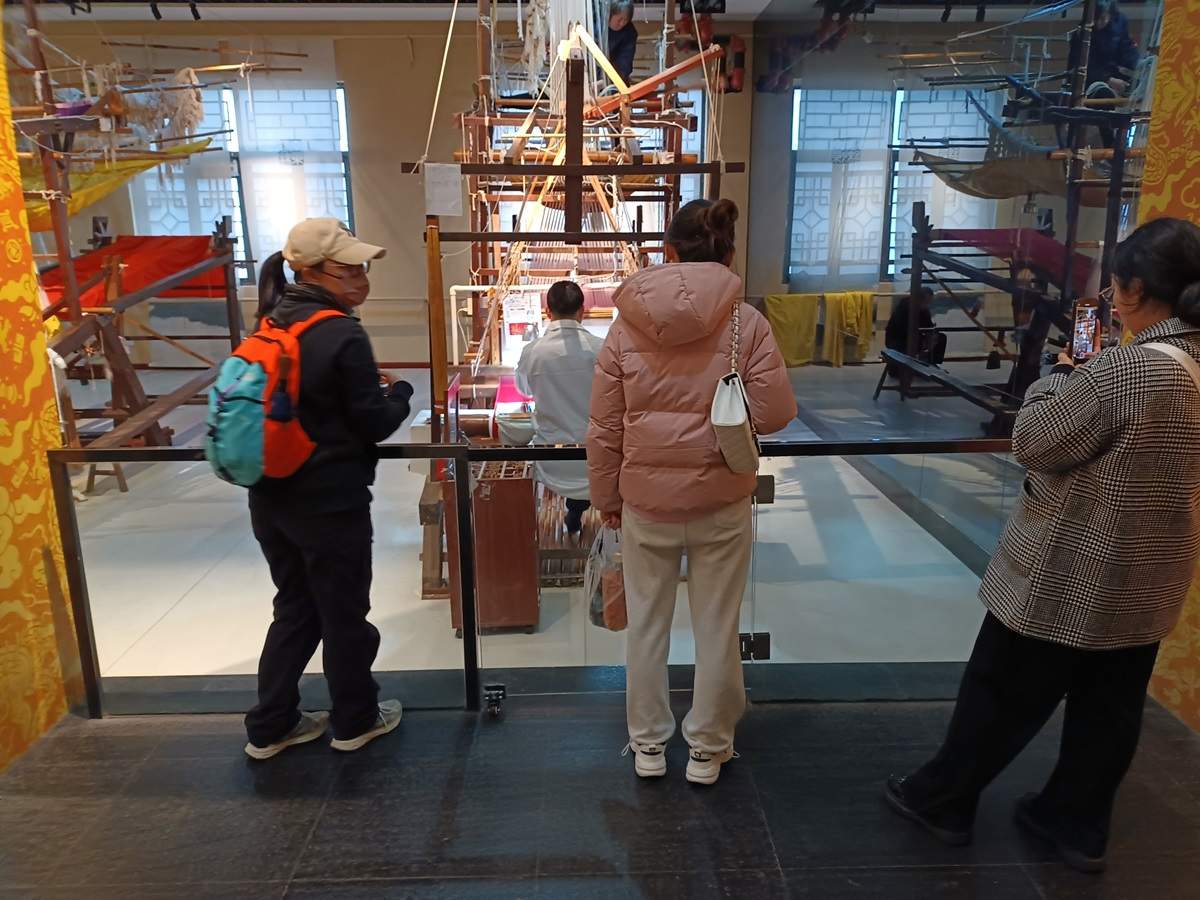
An artisan using a brocade weaving machine. Image supplied by Mike Cairnduff.
The process of making brocade is actually so unique and old (about 1,600 years), that it’s been rubber-stamped as ‘Intangible Heritage of Humanity’ by UNESCO.
You can also buy some legitimate high-quality brocade souvenirs and fashion in their shop, on the way out.
There are plenty of other museums in Nanjing to explore, and this website lists the best ones.
Metro station: Yunjinlu on Line 2 (for the Brocade Museum).
7. Stroll around the Confucius Temple scenic area
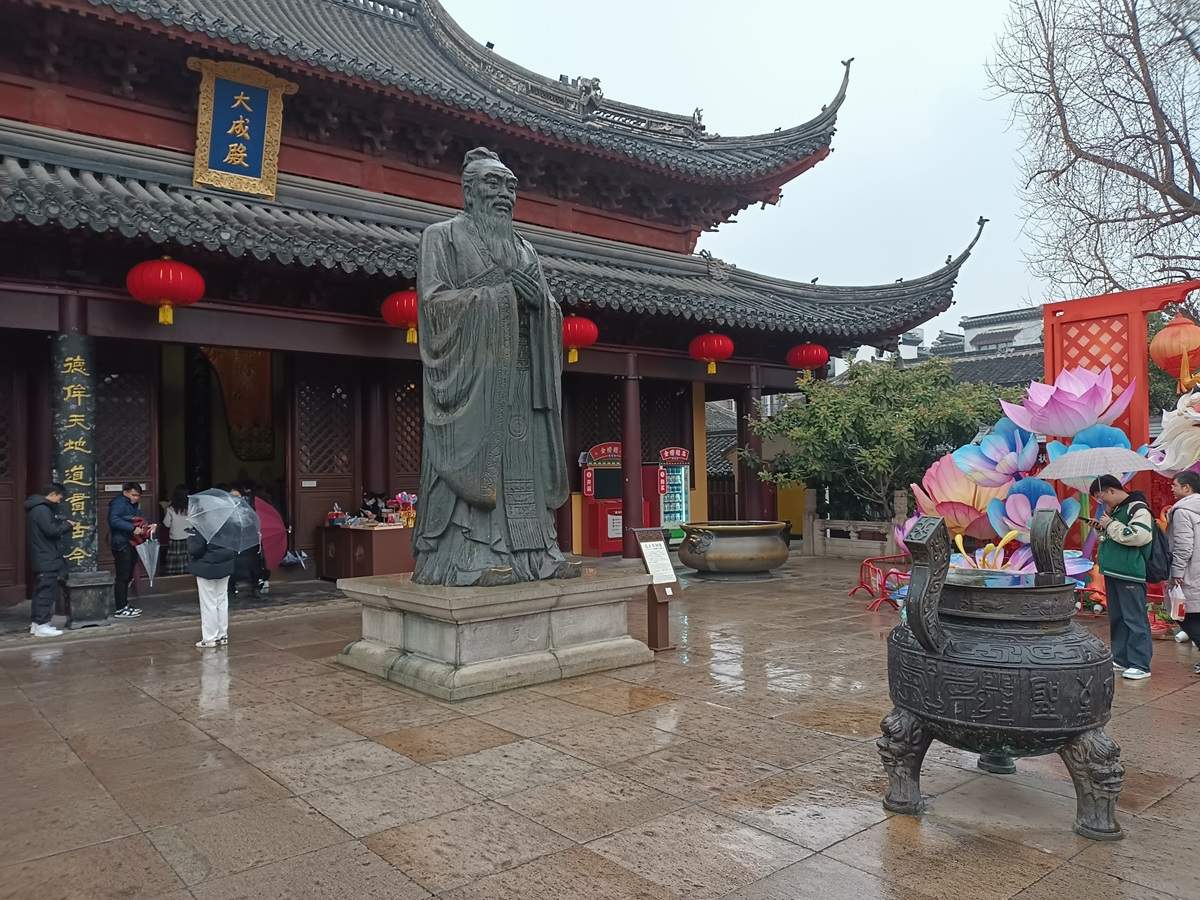
The Confucius Temple. Image supplied by Mike Cairnduff.
This is a very touristy area which is famous for the Confucius Temple.
But you can also:
- Eat snacks and full meals in (overpriced) restaurants
- Shop for local souvenirs
- Visit some historic sites such as the Jiangnan Imperial Examination Hall
- Take a boat ride down Qinhuai River
Like most recreated ‘ancient streets’ in China, the area gets particularly busy in the afternoon and into the night.
Personally, I’m not a fan of these recreated tourist areas (I have seen SO many in China) because they all look the same and sell the same things.
However, I understand that some people are into them, and it could be the only chance you get to pick up some decent Chinese souvenirs on your vacation.
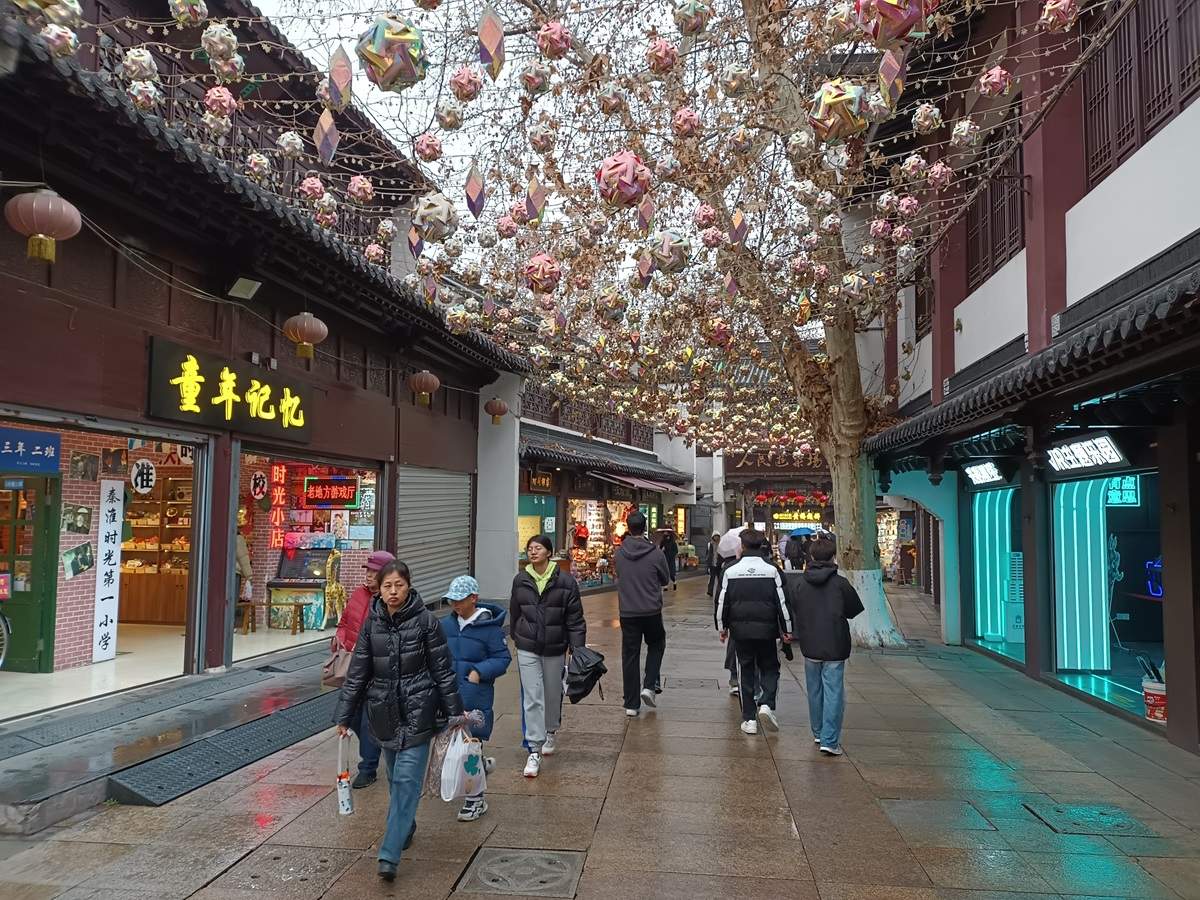
The area has lots of touristy shops and restaurants to explore. Image supplied by Mike Cairnduff.
The Confucian Temple itself is fairly small, and was rebuilt in the 1980s following its destruction in WWII. The entry price of 35 yuan (about US$5) is quite steep compared to other similar temples in China.
But again, if this is your only opportunity to wander through a temple in China and take in the incense-induced atmosphere, then why not?
Metro station: Fuzimiao on Line 3.
8. Go shopping at Xinjiekou
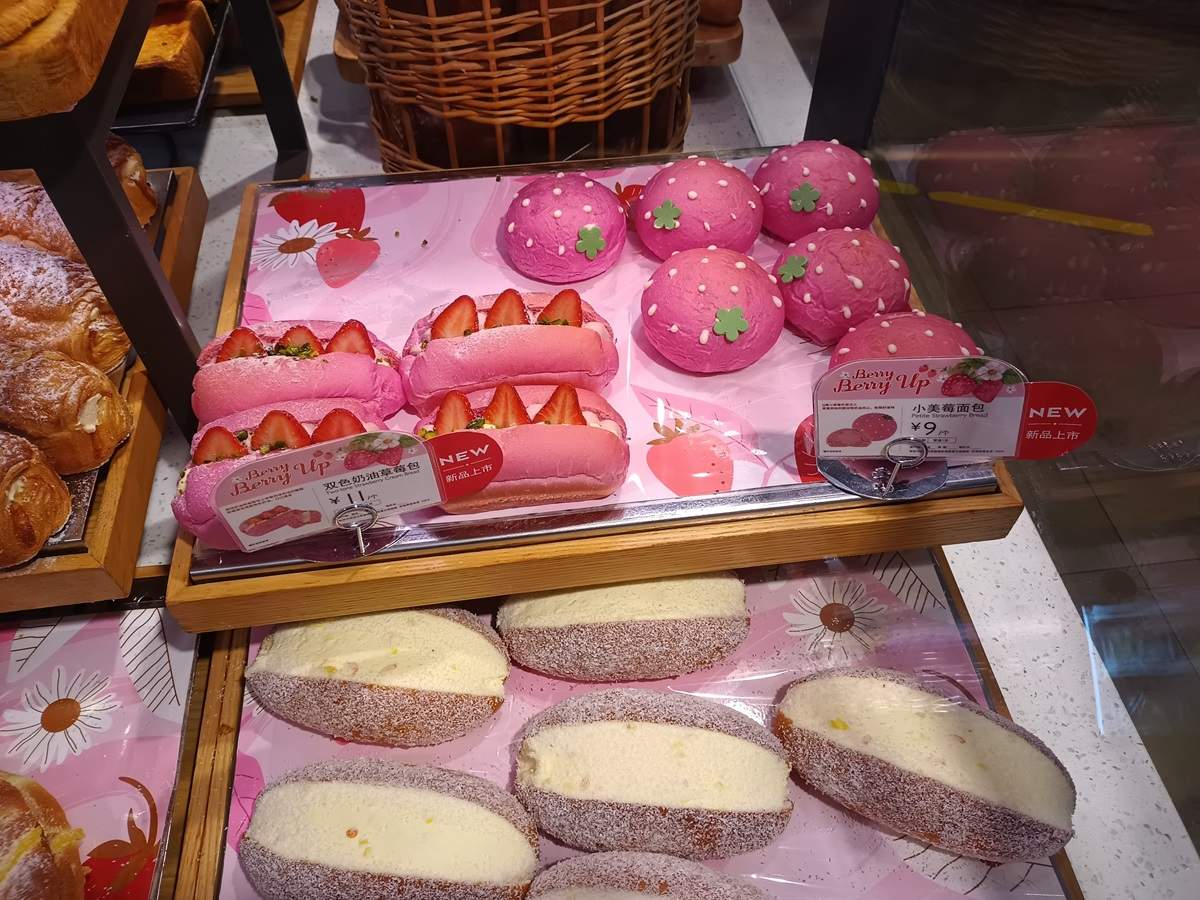
Go shopping and eating at the Xinjiekou underground area. Image supplied by Mike Cairnduff.
I stayed in the commercial and pedestrian heart of Nanjing at Xinjiekou. Highly recommended!
Xinjiekou is on two different Subway lines (1 and 2) making it a breeze to see every Nanjing attraction on this list.
Above-ground, the huge roundabout with the Sun Yat-sen statue in the middle, marks the center of this district.
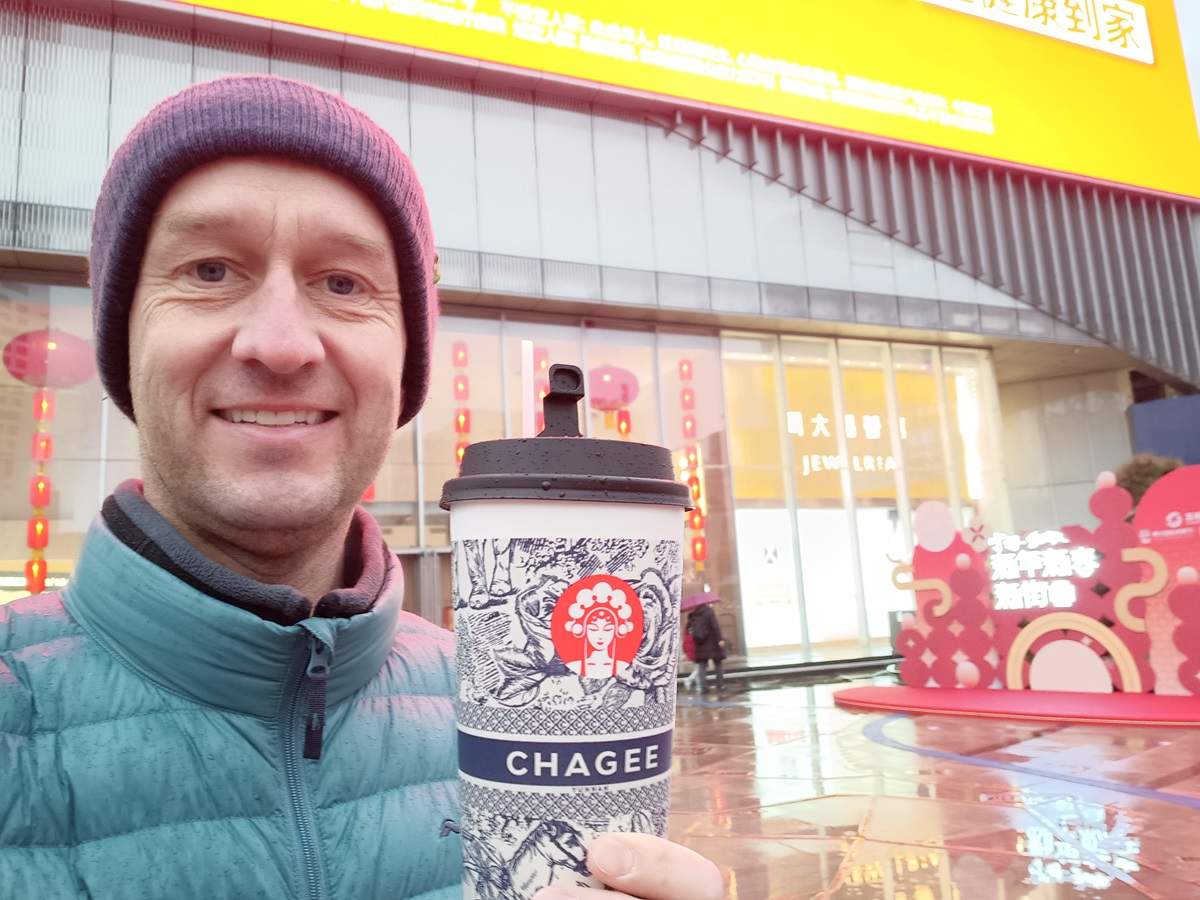
I’m not a big shopper unless it involves eating or drinking! Image supplied by Mike Cairnduff.
But most shoppers prefer to spend time underground because that’s how all the shopping malls, stores, and cinemas are connected.
To be honest, it’s a bit of a maze and it’s probably best for your sanity that you just cruise on through without much of a plan.
The Xinjiekou underground is also a great place to eat, with lots of different options and cheap price-points.
Metro station: Xinjiekou on Line 1 or 2.
9. Eat Nanjing duck
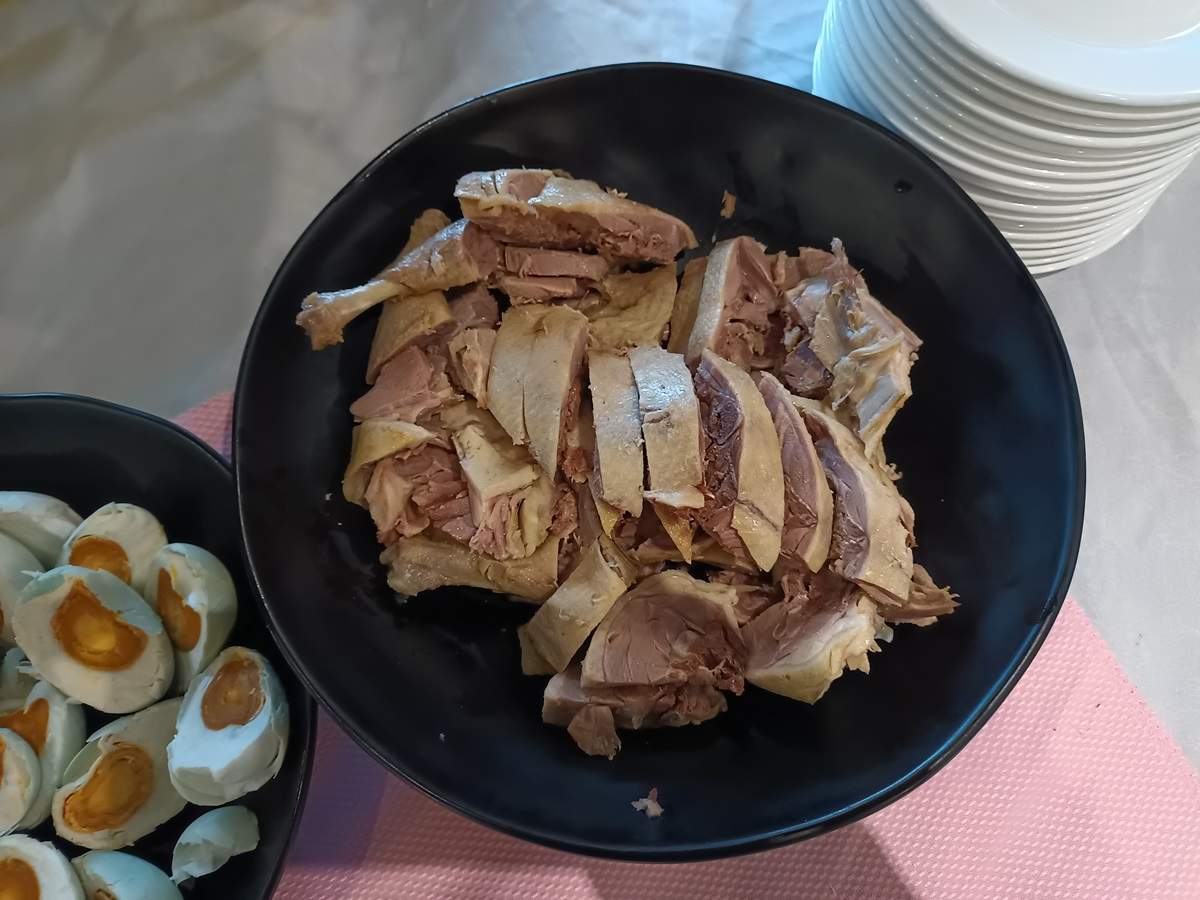
The city is famous for duck. Image supplied by Mike Cairnduff.
Once you’ve done all that shopping, you’re going to need to sit down and fuel up.
While Beijing is famous for Peking duck, Nanjing is the home of all kinds of duck dishes. So, if you’re a big meat eater, you’ll love this city.
If you want to try just a little bit, you could pick up some duck neck or duck tongue at practically any underground train station.
But if that’s a bit too extreme for you, I recommend sitting down at a proper restaurant for the classic Nanjing salted duck.
My hotel even served roast duck for breakfast!
Metro station: Any.
10. Go up Zifeng Tower
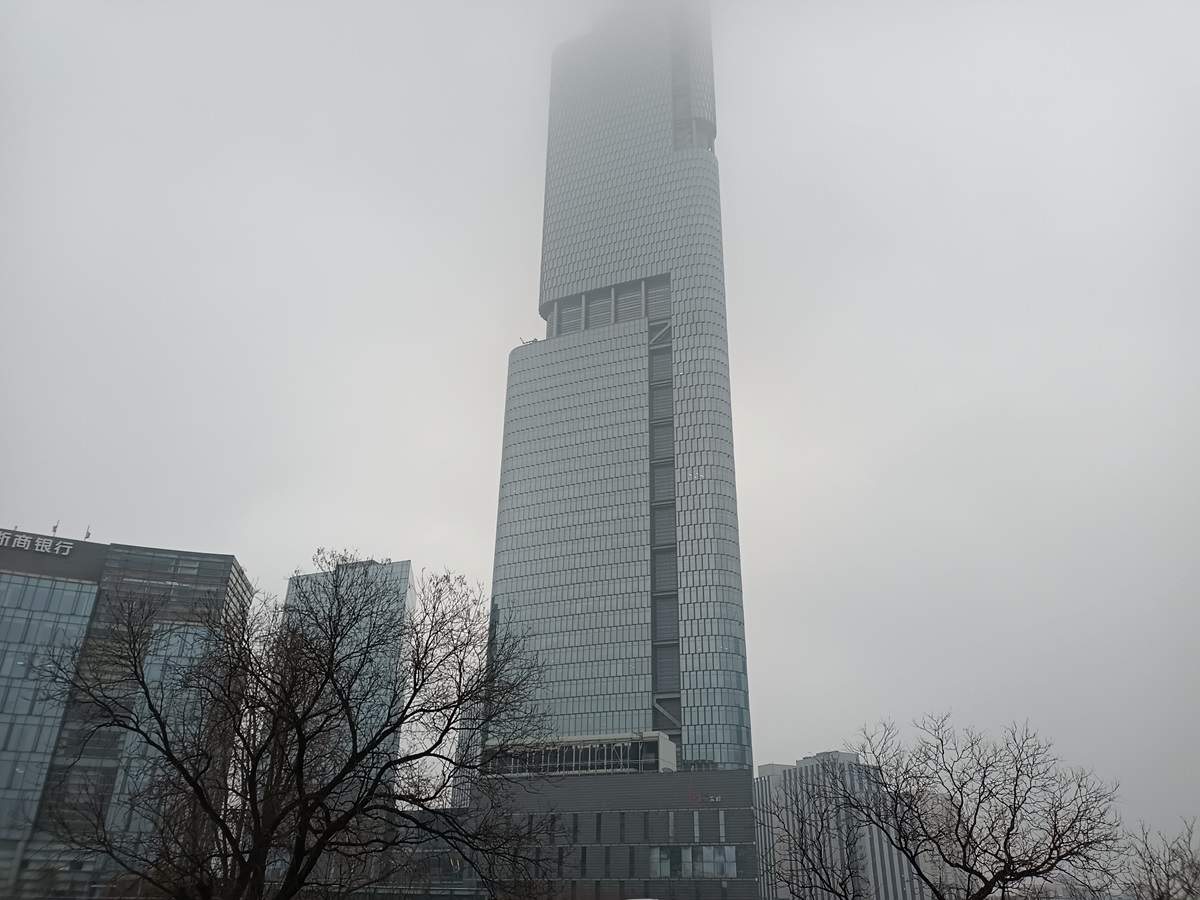
I decided against going up Zifeng Tower due to the fog. Image supplied by Mike Cairnduff.
I love going up observation decks. So, naturally I was gutted that Nanjing was covered in fog for the whole week I was there.
I decided not to go up, having made the mistake before in Shanghai. It’s honestly not worth going to the top of a skyscraper for the views during the middle of winter, unless you happen to get a clear day.
But I’ve still included Zifeng Tower on my list in case you get the chance! It’s definitely something I’ll do next time I’m in the city.
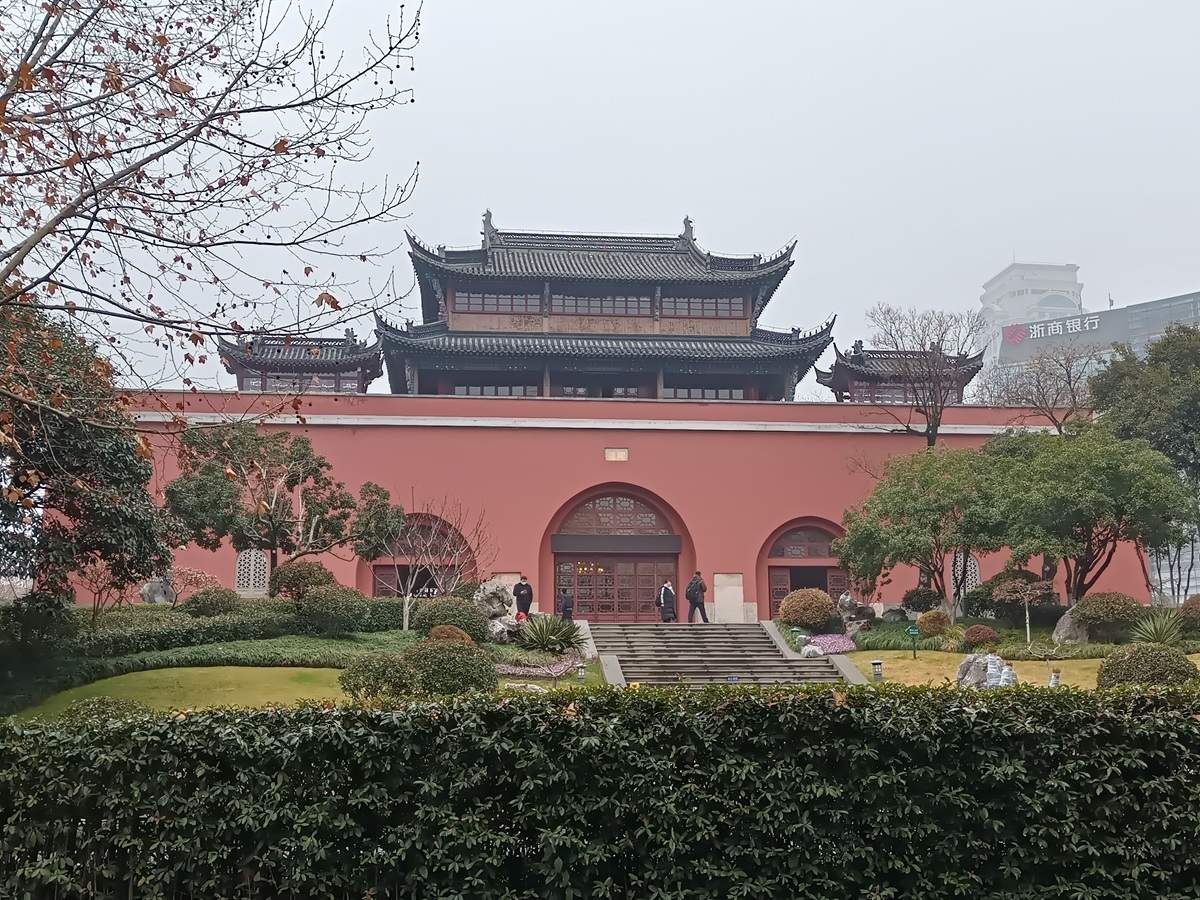
I walked around the quaint Drum Tower instead. Image supplied by Mike Cairnduff.
Instead of going up the tower, I explored the Gulou (Drum Tower) which is just opposite. It’s free to get in.
Metro station: Gulou on Line 1 or 4.
Psst! A quick travel tip
In case you haven’t heard, the Chinese internet is highly censored and most major Western websites and apps are blocked.
So, if you want to use hotel Wi-Fi in China you must get a virtual private network (VPN) on your phone. And you’ll need to download it before you arrive.
Most VPNs don’t work in China so I encourage you to read my quick VPN review here before you sign up for one.
That’s a wrap on the best things to do in Nanjing
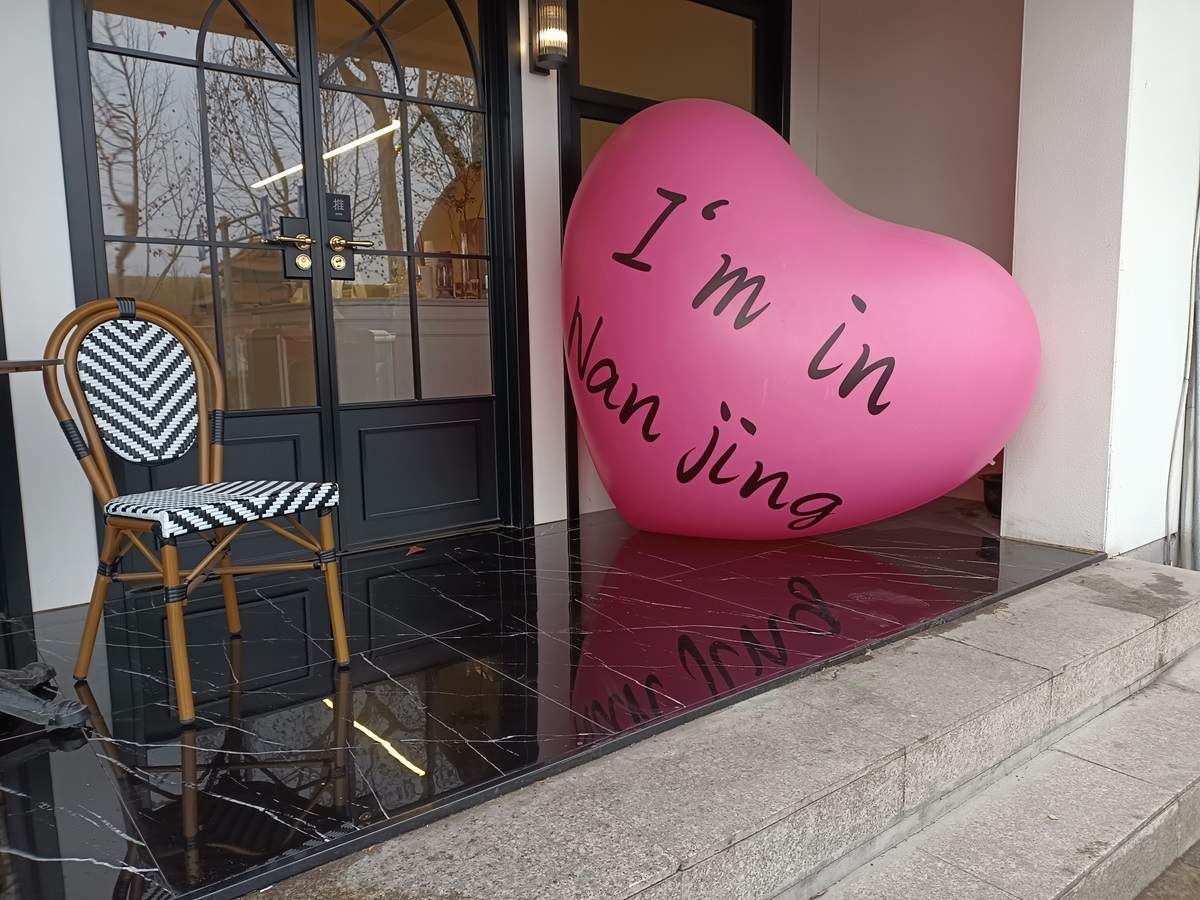
I love you too Nanjing! Image supplied by Mike Cairnduff.
I hope I’ve helped you plan your trip to Nanjing.
Try to use the subway as it’s a great way to maximize your time in the city and see all the best bits within a few days.
Just remember, you’ll need WeChat on your phone to get into some of the main attractions.
Next, I recommend taking a read of my list of the best China travel apps which I put together to help foreign tourists. And don’t forget your VPN!
Main image credit: Supplied by Mike Cairnduff.
FAQ about the top things to do in Nanjing
What’s the best thing to do in Nanjing?
The most popular thing to do is visit the Sun Yatsen Mausoleum, but I think the City Wall of Nanjing is better because it’s less crowded and you can still get a good taste of the history of Nanjing.
Is Nanjing worth visiting?
Absolutely, especially if you’re into museums, free attractions, and recent and ancient Chinese history.
How many days should I spend in Nanjing?
I spent a week there but you could probably see all the best sights within three to four days.


